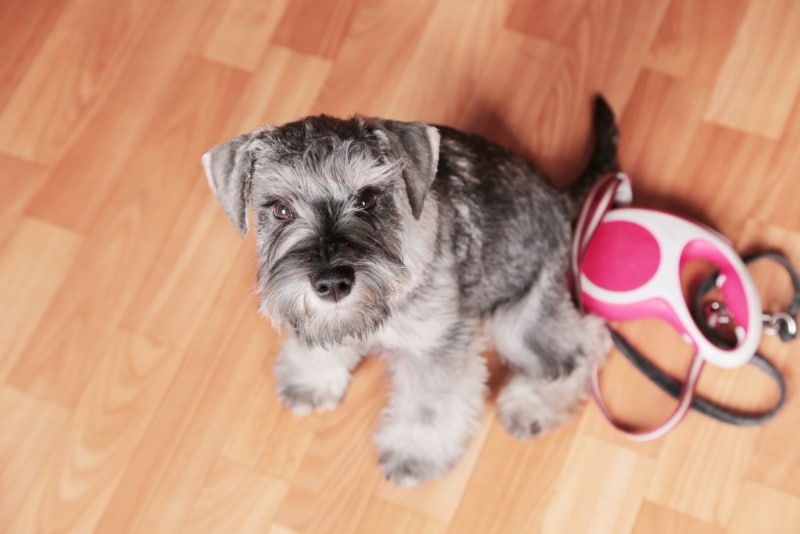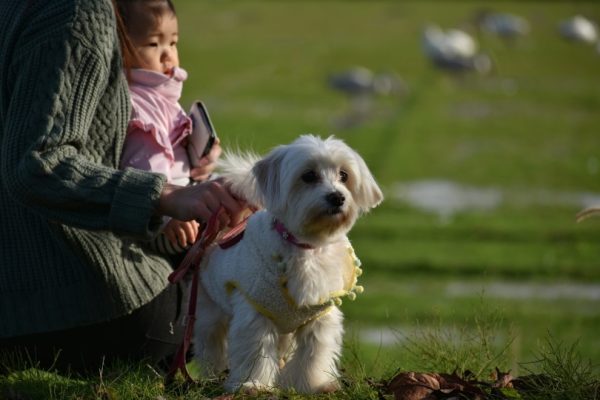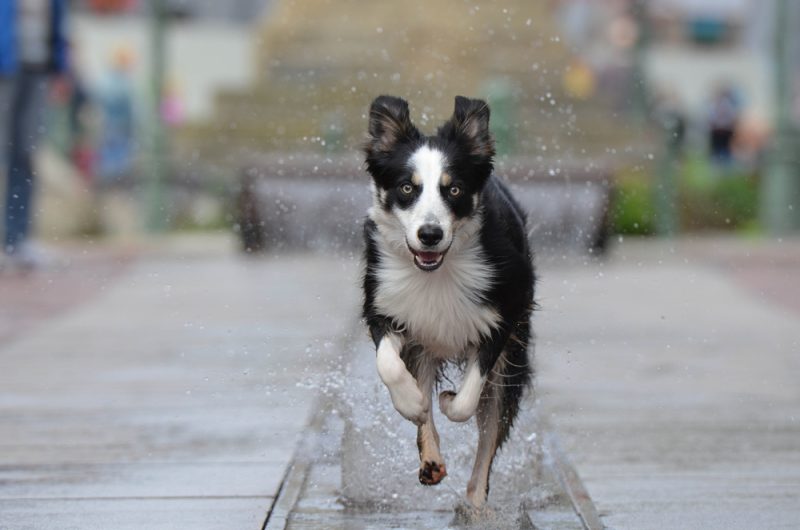In this article
View 8 More +The bold, beautiful Schnauzers have long set themselves apart in numerous ways. Standards are the most versatile of the three varieties and are highly intelligent working dogs that can make pet ownership a never-ending joy and daily source of excitement. Is this the perfect dog for your family? Find out as we explore the Standard Schnauzer’s care, temperament, and traits.
Breed Overview
Height:
17.5–19.5 inches
Weight:
30–50 pounds
Lifespan:
13–16 years
Colors:
Black, salt & pepper
Suitable for:
Active families, those looking for a low-shedding dog
Temperament:
Lively, playful, intelligent, bold, alert, adaptable, trainable
The sturdy, squarely built Standard Schnauzer is the progenitor of all three Schnauzer breeds. The Standard appeared during the Middle Ages in Germany, where it worked as an all-purpose farm dog. Households relied on them to protect and herd livestock, exterminate rats and other barnyard vermin, and guard their owners as they went to the market.
Originally called Wirehaired Pinschers, Standard Schnauzers didn’t earn distinction and their modern name until 1933. The Schnauzer name, derived from the German for “snout,” took over in the early 1900s, bringing attention to the dog’s unique facial hair. As family companions, Standard Schnauzers still have the tenacious, energetic, and loyal nature that made them such prized working dogs for centuries.
Standard Schnauzer Characteristics

Standard Schnauzer Puppies

Standard Schnauzer puppies are the most rambunctious version of these energetic dogs. They’re playful, cute, and curious, with active minds needing immediate attention. Training and socialization must be the focus from day one.
They are quick learners, but Standard Schnauzer puppies need consistent, positive guidance to understand who to trust and how to interact with others.
As Schnauzers can present standoffish and aggressive tendencies, finding a well-adjusted puppy from a breeder is crucial. They need quality socialization with their litter and positive human contact at an early age, putting the onus on the breeder to set them up for success.
Take time to research your options. Responsible breeders will try to pair the proper puppy with a suitable owner and allow potential adopters to see the inner workings of their operations. Be wary of those who can’t provide in-depth breed information, health testing results, or meetings to see the puppies, parents, and facilities.

Temperament & Intelligence of the Standard Schnauzer 🧠
The Standard Schnauzer’s keen intelligence is perhaps their most recognizable trait after the profuse furnishings. Often called the “dog with the human brain,” they are one of the most mentally active of all breeds.
While that makes them particularly adept at picking up training, it also makes them keenly aware of everything around them and clever enough to manipulate situations to their advantage. Without the necessary leadership, a Standard Schnauzer can become stubborn and disobedient.
The Standard Schnauzer’s fearlessness matches its sharp intelligence. Paired with their loyal, protective manner, their bold personalities can sometimes clash with other people and pets. They can be aloof with strangers yet smart enough to quickly discern who is trustworthy.
Generally, Standard Schnauzers are sweet and spirited. They can be playful, mischievous, and testy, but you’ll find they’re equally reliable and devoted to keeping their family safe.

Are These Dogs Good for Families? 🏡
Standard Schnauzers are one of the best dogs for families. They show affection to everyone in the home and love to always be part of the action. Few dogs make better companions for children since Standard Schnauzers display an ideal blend of playfulness, restraint, and tolerance.
Among Schnauzer breeds, the Standard is the perfect size for kids—not so small as to get hurt easily but also not large enough to cause injury. They’re also highly vigilant and effective watchdogs. The ever-alert Standard Schnauzers are ready to switch gears and protect their loved ones, using their purposeful bark to sound the alarm.
Does This Breed Get Along With Other Pets? 🐶 😽
The guard dog in the Standard Schnauzer makes them intolerant and potentially aggressive with dogs. Meanwhile, the ratter in them supplies a prey drive that can send them off like a bullet after smaller animals, including cats.
While those traits can allow for conflict, the Standard Schnauzer is bright enough to adapt to others. Generally, they do well with other pets in the household. Raising them with another pet from a young age is ideal, but a socialized dog can easily accept a new family member with proper introductions.

Things to Know When Owning a Standard Schnauzer:
Traditionally, successful Standard Schnauzers had to be confident and independent problem solvers but also trainable to complete various complicated tasks around the property. The modern breed retains that mindset, demanding ongoing effort from their owners.
Standard Schnauzers are energetic in body and mind and are always thinking and learning. When directed and trained with positive yet firm leadership, they can be wondrous to train, showing enormous potential.
Give them a job, sign them up for sports, and engage them in advanced obedience, and they’ll never fail to impress. But if you neglect them and don’t provide adequate enrichment, they’ll take charge and teach themselves, often learning all the wrong lessons.
First-time owners and those who can’t devote ample time to the exercise, training, and bonding can struggle with Standard Schnauzers. They are headstrong and animated. Without consistent guidance and effective outlets for their energy, they can become destructive, rowdy, and disobedient.

Food & Diet Requirements 🦴
Standard Schnauzers don’t have unique dietary needs, though you should always find the most high-quality food you can afford. The formula should be appropriate for their life stage to ensure proper development.
They’ll generally stay on puppy food for the first 12 months. Feeding smaller meals more often during this period will maintain their energy levels, while adults can get by on morning and evening meals. When fully grown, Standard Schnauzers will eat around 1.5–2 cups of dry food daily.
Exercise 🐕
Standard Schnauzers are a vibrant and robust breed and are some of the best outdoor workout partners. They need at least an hour of exercise daily. A few walks may be enough, but you can give them more of a challenge with a hike or a jog.
If you have a secure yard, games of fetch provide more vigorous exercise. Even better, you can engage their brains with nose work, obedience training, and agility setups.
Training 🦮
Standard Schnauzers are highly astute and quick to learn commands and tricks. While this makes training relatively easy, it can also quickly lead to indifference toward teaching sessions. Owners need to be clever with their training.
The Sessions should be brief to prevent boredom and will ideally incorporate jobs. Schnauzers want to work and challenge themselves, so anything goal-oriented that gives them a sense of purpose can help keep them well-behaved.

Grooming ✂️
The Standard Schnauzer has a wiry double coat that requires special consideration depending on your goals. Brushing should occur every two to three days to prevent mats, and they only need one or two baths a month. It’s best to check and clean their ears weekly, brush their teeth every 2–3 days, and trim their nails every couple of weeks to round out their at-home grooming routine.
With wiry hair comparable to terriers, Standard Schnauzers need similar grooming considerations. You can use clippers to cut back their hair every few months. Unfortunately, simple clipping will soften the texture and lighten the color, causing it to lose definition.
For a show-worthy coat, you should hand-strip them to remove the dead topcoat. Generally, a trip to the groomer every 3–4 months will keep their coat and furnishings in excellent shape.
Health and Conditions ❤️
The Standard Schnauzer is a long-living breed with few prevalent health concerns. Hip dysplasia and eye issues are the breed’s primary issues. Heart conditions, namely dilated cardiomyopathy, are a common concern, while nervous diseases, including leukodystrophy and degenerative myelopathy, are rare but potential problems.
With proper breeder testing, you can find dogs with significantly reduced risks of disorders.
- Allergies
- Follicular dermatitis
- Hip dysplasia
- Eye disorders (cataracts, progressive retinal atrophy)
- Hypothyroidism
- Hemophilia
- Bladder stones
Male vs Female
Beyond the male Schnauzer being marginally larger than the female, few differences separate the sexes. Females will go into heat about twice annually, bringing hormonal and behavioral changes for several weeks.
Some owners find females more serious and alert, while males are more playful and loving with the entire family. Males may show same-sex aggression. In both sexes, spaying and neutering can decrease many gender-specific qualities.

3 Little-Known Facts About the Standard Schnauzer
1. The Mustache Provides Protection
The pronounced eyebrows and mustache set the Schnauzer apart, but they’re far from simple fashion accessories. The heavy furnishings provided protection in the Standard Schnauzer’s original role as a ratter. The hair created a thick shield as it matted, protecting the muzzle against bites and scratches from vermin.
2. The Standard Schnauzer Is Much Different Than Minis and Giants
While some breeds come in multiple sizes, their genetics are similar regardless of their build. Whether you adopt a standard, toy, or miniature Poodle, the look, traits, and temperament are relatively consistent.
In the Schnauzer’s case, the different sizes didn’t result from breeding down or up but from thoughtful outcrosses. The Miniature Schnauzer popped up in the early 1900s. Breeders reduced the Standard’s size by mixing in Affenpinscher, Miniature Pinschers, and other small dogs.
Meanwhile, the Giant Schnauzer combined Standards with drover dogs and guardians like Great Danes. As a result, each type offers a distinct personality.
3. Standard Schnauzers May Be Good for Allergy Sufferers
No dog breed is 100% hypoallergenic, but the Standard Schnauzer may be a decent option for dog lovers with allergies. Despite their double coat, Standard Schnauzers are surprisingly low shedders. They leave little hair and dander around the home if you keep up with grooming appointments. Add in their minimal drooling, and they won’t give much room for sensitive individuals to have adverse reactions.
Final Thoughts
If you have the time and energy to keep up with a Standard Schnauzer, you can enjoy one of the most fulfilling ownership experiences any dog can offer. They are a brilliant and athletic breed with near-limitless potential. Those smarts can indeed lead to mischief and frustration for an inexperienced owner, but the Standard Schnauzer’s loyalty and love place them among the best breeds for an active, devoted family.
Featured Image Credit: Jagodka, Shutterstock




















